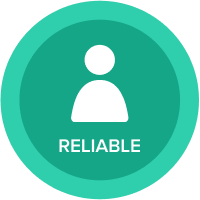Make a copy of our Prod model and make it our DEV Model?
Hi there,
I currently have a DEV model that is not deployed where i create a revision tag, push it to our UAT deployed model, then push it to our Production Deployed model. I want to refresh our DEV model with the latest data in our Prod model. I was wondering if i can take a copy of our Prod model and then make this the DEV model? Will i need to adjust the source model or anything so that when i create a revision tag in this new DEV model, i can push it to UAT and then to Prod? Also, do i need to connect this to our DEV HUB model as well? If anyone can help out that would be much appreciated!
Thank you 🙂
Amanda
Answers
-
Hi Amanda,
If you want to make a new DEV model (which is a copy of PROD model) and make that as a DEV model, then ALM sync will break.
To get the PROD data to the DEV model, kindly create a process (Import Actions to load DEV lists/modules) to fetch data from PROD to DEV. This will make sure the DEV model will contain the latest PROD data as and when you run that process.
Let me know if this helps.
Thanks
Sathya2 -
Hi,
Yes you can copy model prod to dev model, but you cant snyc anymore with latest model, New dev to UAT to Prod because New dev have another struktur revision tag (with UAT and Prod).
Thanks,
Panji
0 -
Hi Amanda-
Yes, you can absolutely do this. You need to be sure to do a couple of things in the correct order, but it is completely possible.
I will refer to your current DEV as "DEV 1", and once we copy PROD then I will refer to it as "DEV 2"
-First, we will Copy PROD and Create DEV 2.
-We need to change the Mode of DEV 2 from Deployed to Standard.
-At this time we technically have multiple models that are compatible (DEV 1 and DEV 2), and the next revision tag is the one that is the most important and will make other models incompatible.
-We then want to Archive DEV 1 to not get confused.
-When our next revision tag is created in DEV 2 then it will be found when running the Compare/Sync in PROD.
From there, you will want to go into your Source models and Change the Mapping in DEV 2 to look at your DEV HUB instead of your PROD HUB so that it pulls in data from the corresponding HUB. The source models are considered Production Data, so it will not impact the compatibility for ALM.
If you are still uncomfortable doing this, I might recommend doing a quick 10-minute run though by doing the following:
-Create a new model (DEV)
-Create a module or list
-Copy DEV and Make a PROD
-Change the PROD into Deployed Mode
-Make a change in DEV, Revision tag and sync to PROD
-Copy PROD to make DEV2 and change DEV2 to Standard mode
-Create a new module in DEV2, Revision tag, then Sync to PROD
-Test Complete! Now PROD is compatible with DEV2
I hope this helps!
Jason
7 -
Hi Amanda and Jason,
As there are multiple answers, just pitching in to add that Jason's is the right approach
Regards,
Anirudh1 -
Hi Jason,
Quick question:
For example, after a week, if we want to fetch the latest PROD data to DEV2 model, then do we need to do the same steps?
Thanks
Sathya0 -
Sathya-
Yes, this would just be copying the model and its data from the second that you copy it. Any changes to data thereafter in PROD would not be linked to the DEV2 model. Any future refreshes of the data would then need to run through the same process. If there is a need to constantly keep PROD Data in DEV then there might be a better approach, but in my experience, periodic refreshes of DEV are adequate (I typically do this infrequently like 0-4 times per year depending on the Company and Use Case).
Jason
2 -
Hi Jason,
Thank you so much for this detailed description! 🙂 I was able to make a copy of both models and now i have the new DEV HUB (copy of Prod HUB) and the new DEV 2 (copy of Prod). I also created a revision tag in both models and pushed it from DEV HUB -> UAT HUB -> Prod HUB and a revision tag in DEV 2 -> UAT 2 -> Prod 2. When i run an action to import data from DEV HUB to DEV 2, i dont see the new data. How do i fix it so that these import actions will work? Thank you! 🙂
Best,
Amanda1 -
Amanda-
You will need to re-map the model in the Source models:

In this example, I am in my DEV2 model, and I click on Source Models in the Settings. By default the "Mapped To" Section is likely Blank (Or Mapped to PROD because that is what we copied). In this case, I am guessing you want to hook DEV HUB to DEV2 so you can click Edit Mapping and then select the New DEV HUB model.
This will map all Model to model imports from the original model to the new model/correct instance.
Data should flow like this if my understanding is correct:
DEV HUB -> DEV2
TEST HUB -> TEST2
PROD HUB - PROD (this one shouldn't need any changes to the mappings)
Let me know if you have further questions!
Jason0 -
Hi Amanda
Whilst the answers are correct and you just basically go along copying, archiving, relinking various models this question needs to be answered...
Why are you wanting to put production data in the dev model? This surely goes against security issues about not having live production data in development areas. Certainly if this were to happen in where I work all sorts of flags would be raised.
The dev model should only contain enough data to be able to prove calculations and data flow working, then onto test where there might be live structures but still "fake" data before going to the prod model where there's live data which often has sensitivity around it.
Andrew
0 -
Jason @jasonblinn , love your answers on here and wanted a little clarification if you could...I am confused what you mean by Dev HUB and Prod HUB in the answers you gave, and also the role of source model mapping.
- Copy Prod and create Dev 2
- Change Dev 2 from deployed to Standard
- Archive Dev 1
- Dev2 is now the official "Dev"
- Create a revision tag in Dev2, compare/sync with Prod
- (I understand this part)
I understand this part above, but am confused with you mean by going into source models and changing the mapping in Dev2 to look at your Dev HUB, instead of your Prod HUB. Are these "HUBS" separate models? Are these renamed models?
Prod hasn't changed, so the source model mapping there I guess would be remapping anything that said Dev1 and changing it to Dev2?
0 -
The reason is its harder to build in dev without that data/information. It can cause some issues with the back and forth of making changes and then pushing a sync just to verify they worked correctly, especially with dashboards end users are using. There may be space constraints so we aren't able to use a QA model. Also, theres no security issue or data transparency concern with the people we have developing the models.0
-
Hello Jason, Our team is currently using this process to copy data from PROD to DEV. Our reason for doing so is that to be able to test and validate, we do need the latest information. We currently only do this once a quarter after our forecast period ends.
The issue we are facing now is that we have connected Informatica to both DEV and PROD. The copying process changes the Model ID for the DEV which would then require us having to reconnect Informatica with the new model ID. Are there any other options of copying PROD to DEV without changing Model ID? Is the only other option to create actions to import data from PROD to DEV?
ThanksSiddhi
0 -
There is no way to copy a model without getting a new Model ID.
Generally, there is a Variable set up in integrations so that changing the Model or WS ID is quick, and you only have to change it once. I would recommend checking if you have that setup and if not, looking to see how easy it might be to get that done. Then the whole copy and re-pointing of integration should just take a matter of minutes.
Hope this helps!
Jason0 -
Sorry for not getting back to you sooner on this one. In this case, I am assuming that you are using ALM on your HUB as well. In the source model section of the settings, you are able to map all of your source models to other models.
In this example, i am assuming that you want DEV HUB to Feed DEV 2 and you want PROD HUB to feed PROD.
When PROD is copied, all of the imports from the hub are pointed at PROD HUB, and this step simply repoints the imports to DEV HUB.
https://help.anaplan.com/en/bc3921b7-b169-47c3-a70d-c8fe2ef33860-Source-Models
Jason
0 -
@jasonblinn Thanks. I will look into this option.
0 -
I just wanted to make sure I understand your comment below.
"There is a Variable set up in integrations so that changing the Model or WS ID is quick, and you only have to change it once."
Does this refer to an Informatica Variable setup or an Anaplan Variable setup? Could you clarify so I may follow up and ask the appropriate question?
ThanksSiddhi
0 -
It would be on the Informatica side.
Think of it like this:
variable = Blue
Integration1: The Sky is variable
Reads: The Sky is Blue
Integration2: My favorite color is variable
Reads: My favorite color is Blue
In the above example, "Blue" is your Workspace ID. The integration is written with "The Sky is" hardcoded, and then references to what the variable states to complete the phrase. As you can see, I have multiple integrations that reference the same variable, and therefore, by changing one field, I am able to utilize that in multiple integrations.
This is obviously an overly simplified version, but hopefully paints a picture of what it can do.
Jason
0 -
@jasonblinn Thank you. I'll follow up accordingly.
0 -
We are not using ALM on our Hub...do you think that's best practice? I'm not sure I understand why it would be necessary0
-
I have done it both ways and I personally don't think there is a right or a wrong, just an "It depends"
Using ALM allows you to have different data sets, maybe you have a size constraint and can not have a full copy of production, so you just choose a couple of categories, or customers (Depending on your hierarchies). In many large organizations, there are strict guidelines to say that Production data cannot be in a development model as well.
If having one works for you, you are using the same data and data sets, and everything else is running smoothly, keep it as you have it!
Jason
0













